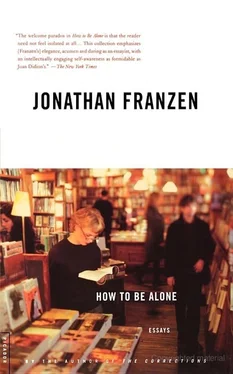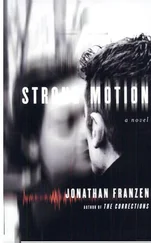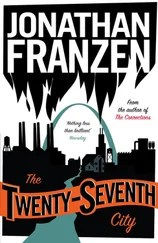Ultimately, the belief that the country’s century-long love affair with the cigarette can be ended rationally and amicably seems as fond as the belief that there’s a painless way to kick nicotine. The first time I quit, I stayed clean for nearly three years. I found I was able to work more productively without the distraction and cumulative unpleasantness of cigarettes, and I was happy finally to be the nonsmoker that my family had always taken me to be. Eventually, though, in a season of great personal loss, I came to resent having quit for other people rather than for myself. I was hanging out with smokers, and I drifted back into the habit. Smoking may not look sexy to me anymore, but it still feels sexy. The pleasure of carrying the drug, of surrendering to its imperatives and relaxing behind a veil of smoke, is thoroughly licentious. If longevity were the highest good that I could imagine, I might succeed right now in scaring myself into quitting. But to the fatalist who values the present more than the future, the nagging voice of conscience — of society, of family — becomes just another factor in the mental equilibrium that sustains the habit.
“Perhaps,” Richard Klein writes in Cigarettes Are Sublime , “one stops smoking only when one starts to love cigarettes, becoming so enamored of their charms and so grateful for their benefits that one at last begins to grasp how much is lost by giving them up, how urgent it is to find substitutes for some of the seductions and powers that cigarettes so magnificently combine.” To live with uncontaminated lungs and an unracing heart is a pleasure that I hope someday soon to prefer to the pleasure of a cigarette. For myself, then, I’m cautiously optimistic. For the body politic, rhetorically torn between shrill condemnation and Neanderthal denial, and habituated to the poison of tobacco money in its legal system, its legislatures, its financial markets, and its balance of foreign trade, I’m considerably less so.
A few weeks ago in Tribeca, in a Magritte-like twilight, I saw a woman in a lighted window on a high floor of a loft apartment building. She was standing on a chair and lowering the window’s upper sash. She tossed her hair and did something complicated with her arms which I recognized as the lighting of a cigarette. Then she leaned her elbow and her chin on the sash and blew smoke into the humid air outside. I fell in love at first sight as she stood there, both inside and outside, inhaling contradiction and breathing out ambivalence.
[1996]
A few months ago, I gave away my television set. It was a massive old Sony Trinitron, the gift of a friend whose girlfriend couldn’t stand the penetrating whistle the picture tube emitted. Its wood-look veneer recalled an era when TV sets were trying, however feebly, to pass as furniture — an era when their designers could still imagine them in a state of not being turned on. I kept it in inaccessible places, like the floor of a closet, and I could get a good picture only by sitting crosslegged directly in front of it and touching the antenna. It’s hard to make TV viewing more unpleasant than I did. Still, I felt the Trinitron had to go, because as long as it was in the house, reachable by some combination of extension cords, I wasn’t reading books.
I was born in 1959, on the cusp of a great generational divide, and for me it’s a toss-up which is scarier: living without electronic access to my country’s culture, or trying to survive in that culture without the self-definition I get from regular immersion in literature. I understand my life in the context of Raskolnikov and Quentin Compson, not David Letterman or Jerry Seinfeld. But the life I understand by way of books feels increasingly lonely. It has little to do with the mediascape that constitutes so many other people’s present.
For every reader who dies today, a viewer is born, and we seem to be witnessing, here in the anxious mid-nineties, the final tipping of a balance. For critics inclined to alarmism, the shift from a culture based on the printed word to a culture based on virtual images — a shift that began with television and is now being completed with computers — feels apocalyptic. In much the same way that Silicon Valley dreams of the “killer application” that will make PCs indispensable to every American, alarmists seek a killer argument that will make the imminence of apocalypse self-evident.
One recent attempt at a such an argument is a book called A Is for Ox , by the literary scholar Barry Sanders, who takes as his starting point two dismal trends: rising violence among youth and falling verbal SAT scores. In answer to the well-documented fact that children don’t read and write the way they used to, Sanders refreshingly declines to give the explanation that Barney has murdered Mother Goose. TV still plays the villain in his cosmology, but it works its evil less by displacing reading than by replacing verbal interaction with parents and peers. No matter how high the quality of the programming, an excess of passive reception stunts a child’s oral development and prepares her or him to be frustrated by the seemingly arbitrary rules of standard English. Computers and video in the classroom only compound the estrangement from spoken language. Frustration turns to resentment: kids drop out of school and, in the worst case, join violent gangs of what Sanders calls “post-illiterates.” It’s his thesis that without a literacy rooted in orality there can be neither a self, as we understand it, nor self-consciousness. Interpreting the past, entertaining choices in the present, projecting a future, experiencing guilt or remorse — these are all, according to Sanders, activities foreclosed to the soulless young gangsters of today and to the fully computerized society, neither oral nor literate, of tomorrow.
The problem with Sanders’s argument, as a killer, is that he has to finger too many culprits. He lays the blame for the national crisis in literacy as much on the decline in the quality time parents spend with their children as on the video input that has filled the vacuum. Young gangsters, he notes, not only are addicted to images but also come from impoverished, unstable homes. So are we facing a technoapocalypse, or is it plain old-fashioned social dysfunction? Every mother I know restricts her children’s TV intake and sows resistance to it by encouraging reading. Like the readers of this essay, my friends and I belong to that class of well-educated “symbolic analysts” which Labor Secretary Robert Reich believes is inheriting the earth. Sanders’s generalizations about “young people today” apply only to the segment of the population (admittedly a large one) that lacks the money or the leisure to inoculate its children against the worst ravages of electronic media. What he describes as the self-immolation of civilization is in fact only a partitioning; and the irony of this partitioning is that those with the greatest access to information are the ones least tethered by the wires that bring it.
ANYONE WITH A TASTE for such ironies will enjoy Nicholas Negroponte’s Being Digital , a guide to Tomorrowland for those who believe that technology has created no problems that better technology can’t fix. Negroponte is the director of the Media Lab at M.I.T., and Being Digital is a compilation of his monthly columns in Wired magazine, the graphically adventurous “bible” (as I’ve seen it called) of the cyberworld. Wired attempts to celebrate the in-ness of the in crowd while leaving the door open for newcomers, and it manages the trick by selling both vision and inside dope. Negroponte’s specialty is vision. He’s the in-house oracle.
Leaders of government and industry flock to Negroponte for advice, and as a consequence, much of Being Digital is about (how else to put it?) resource allocation. Should developers of virtual-reality equipment spend their finite computing power on heightening video resolution, or on improving the equipment’s reaction time to a user’s head and neck movements? Go with the speed, says Negroponte. Should Wall Street invest in high-volume electronic pipelines or in TV technology that uses existing pipelines more efficiently? Go with the smart, small machine, says Negroponte.
Читать дальше
Конец ознакомительного отрывка
Купить книгу












